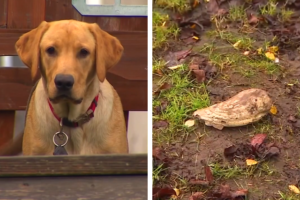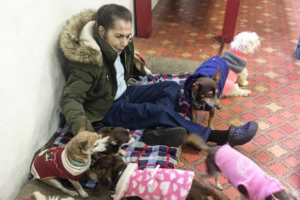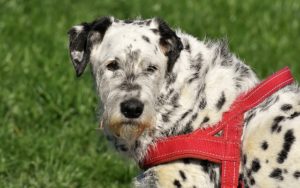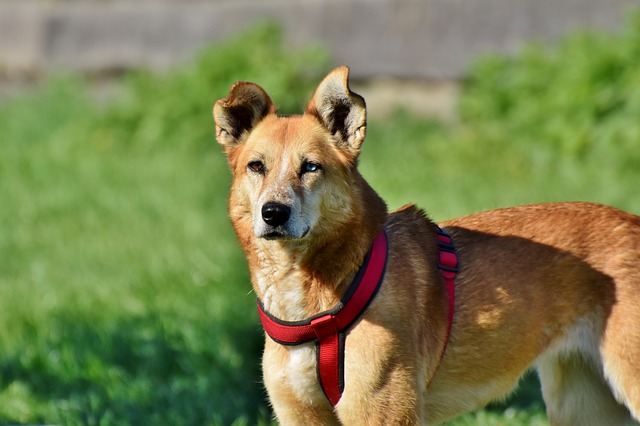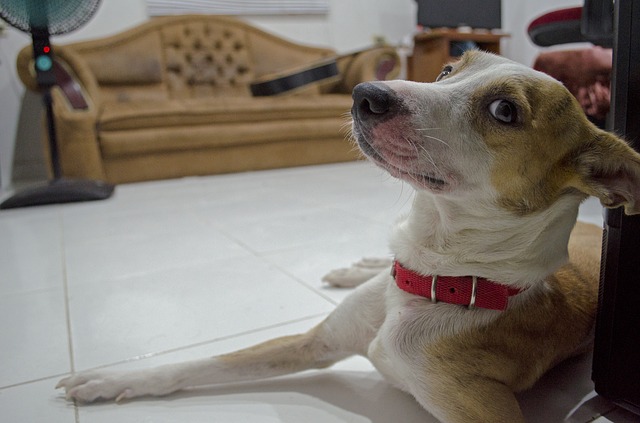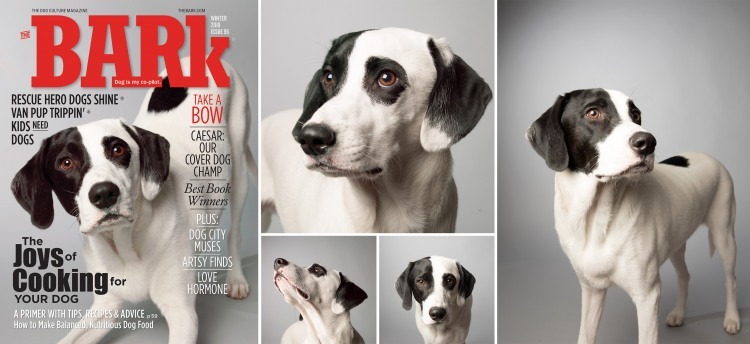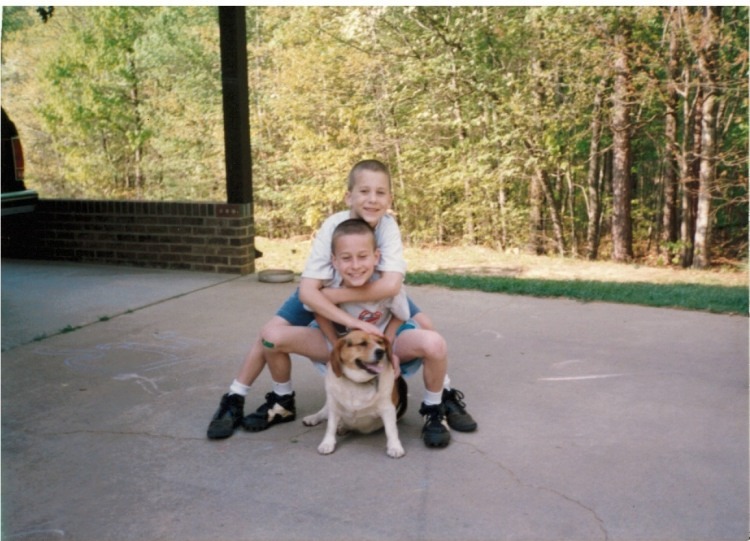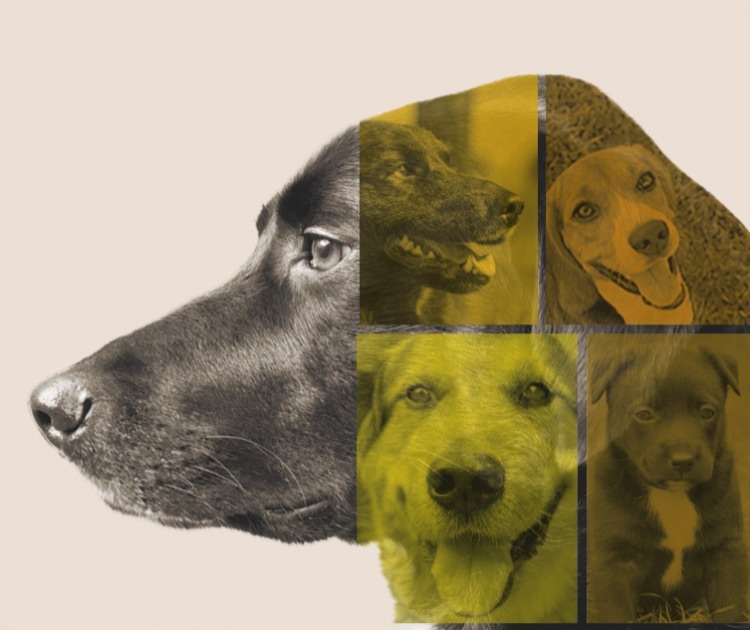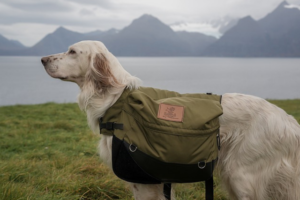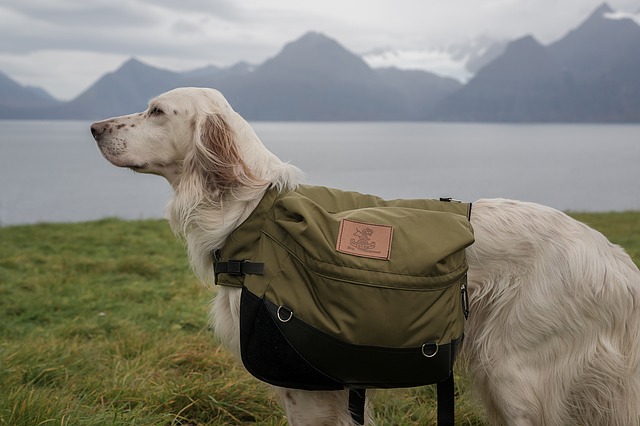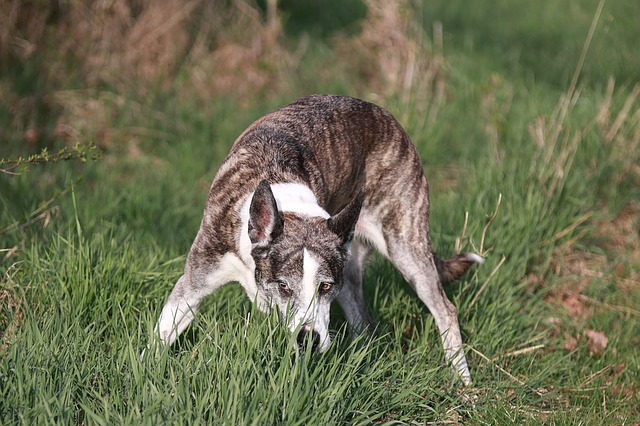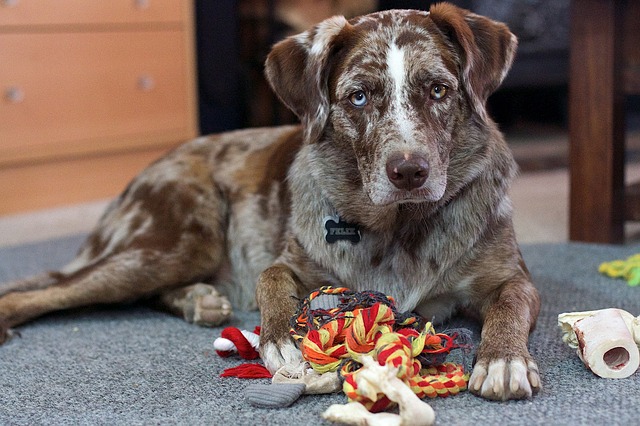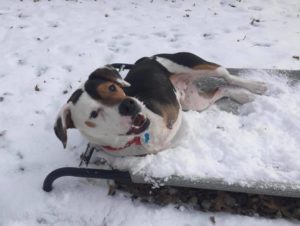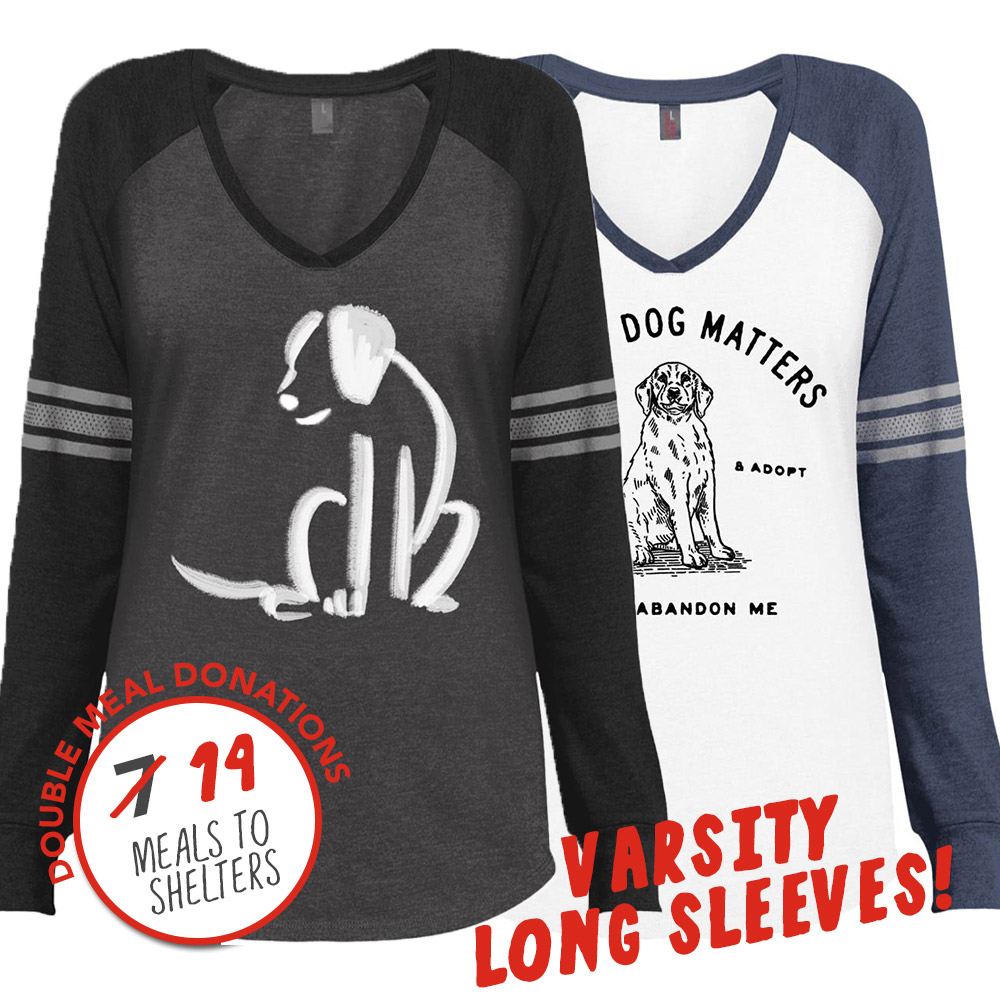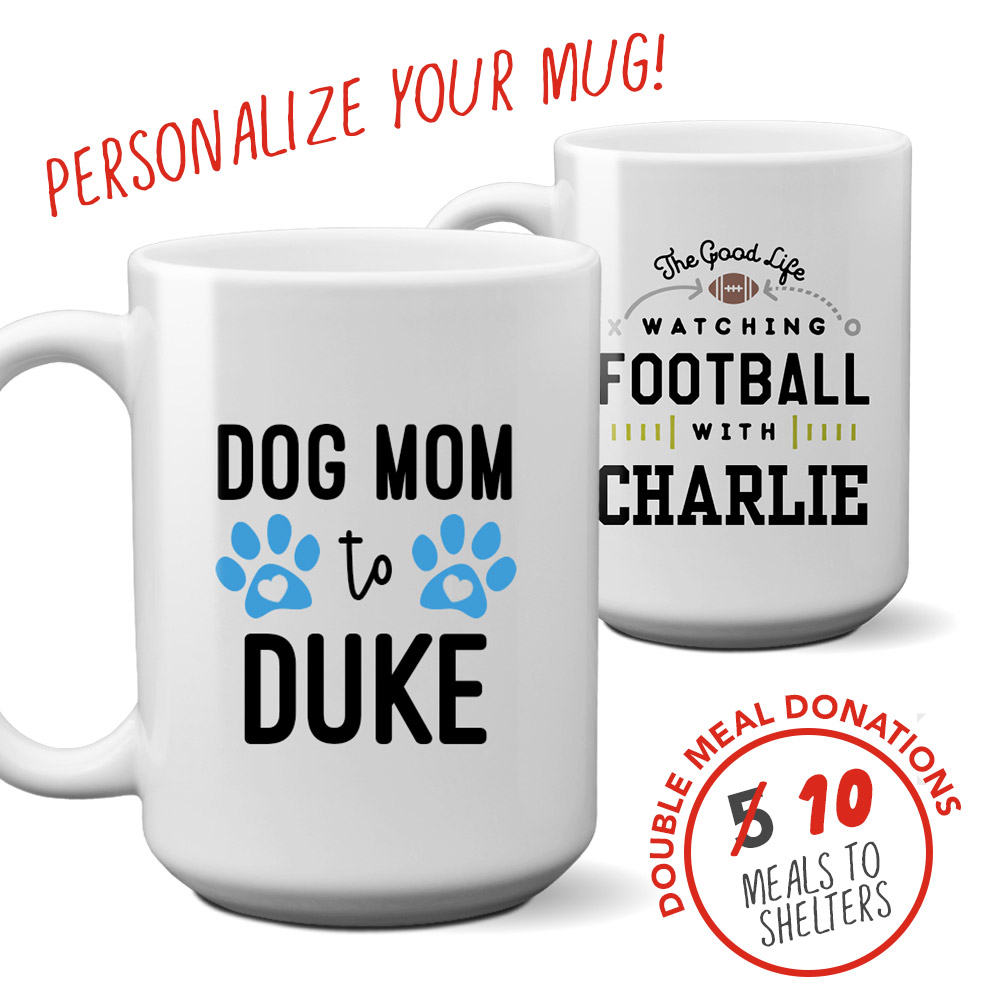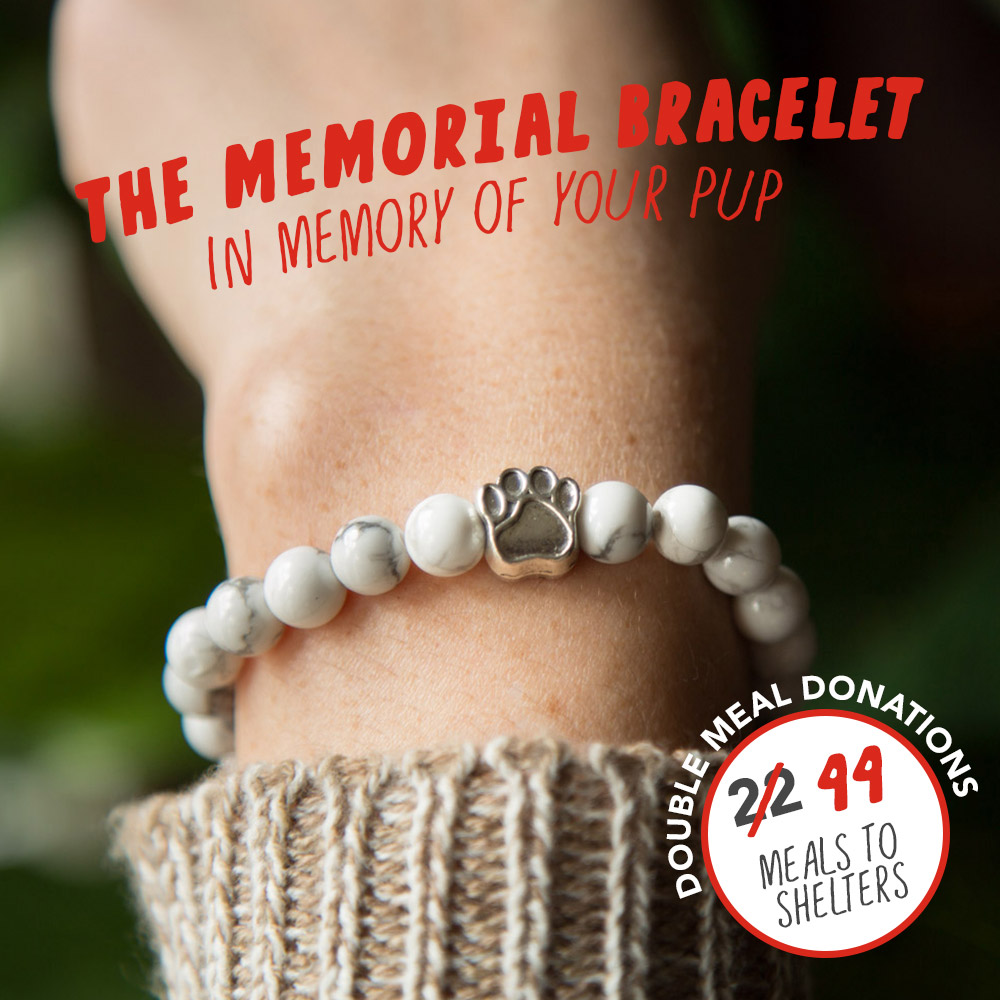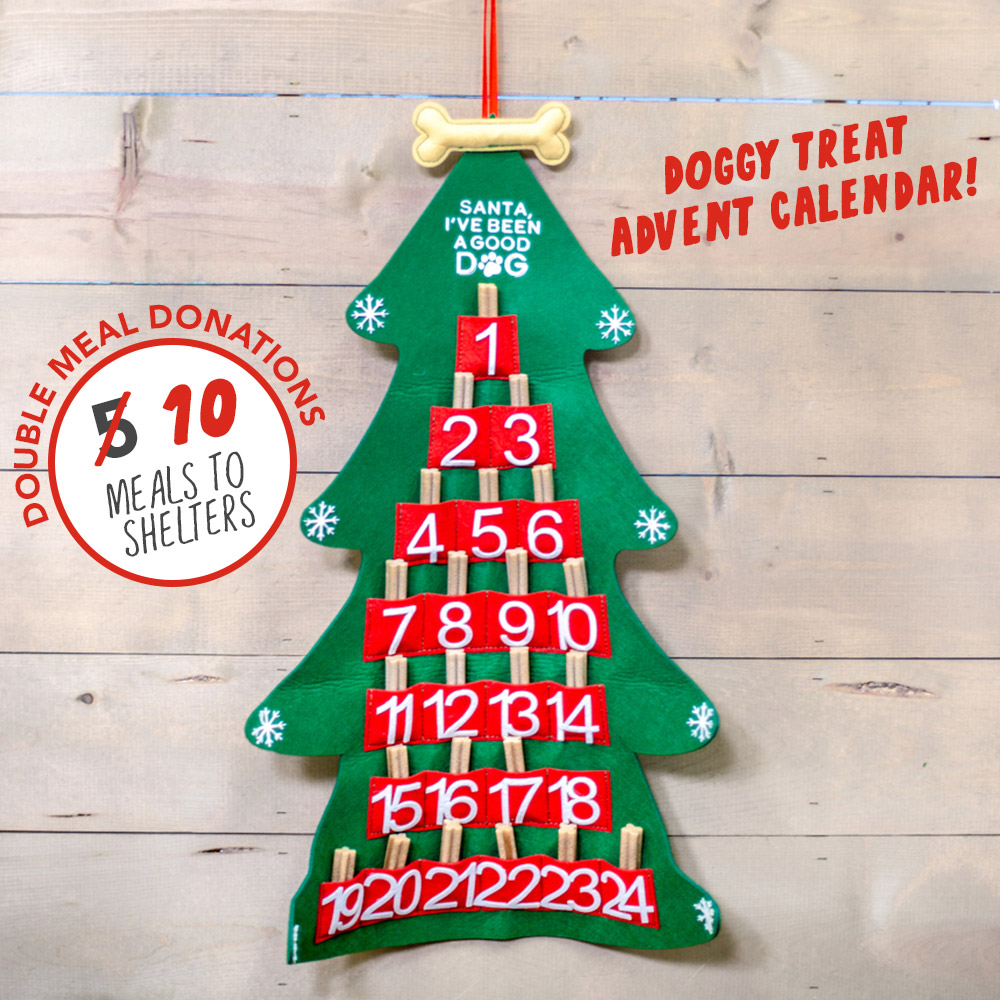
People are not the only ones who can suffer from cold weather. Dogs and cold weather can also be a problem. Cold temperatures can bother us all! Plus, time spent outdoors in frigid weather can be exhausting.
Most people are under the misguided idea that because dogs have fur coats, that cold temperatures do not bother them.
There is some truth in that statement. Most dogs prefer a little bit of cold air over extreme heat. And their fur coats shield them from some of both heat and cold.
Very few dogs are “built” for the cold weather anymore. Sure the Alaskan Malamute and the Siberian Husky were genetically bred to withstand even extreme drops in temperature, and many of them are still used in some parts of the country to drive sleds as part of their job. These dogs spend almost all of their time outside.

When I was 18, I knew a couple that lived in a tiny cabin on the top of a mountain in Wyoming. They had about a dozen Alaskan Malamute/Husky mixes that lived outside all year long. Their dog houses were made to rise with the snow in the winter time so that they could still provide cover. These friends literally couldn’t get back to their home without the help of their sled dogs because their vehicles couldn’t make the trip during the most extensive parts of winter. They would park their cars several miles away and take their dog team back and forth when they needed to make their way down the mountain and into town.
Although this would not be how I would have or treat my dogs, I can assure you that these dogs did quite well in cold weather because they had adjusted to it, spent all of their time outside, and never knew anything else.
When I used to compete in obedience and protection sports in summer, it was always easy to tell which dogs spent more time outside. These dogs didn’t suffer in the heat quite as badly. I for one have a dog that is very temperature sensitive, and so I can only compete outside if conditions are right for her and her health problems. For me, it all depends on the amount of time she will have to spend outside in the heat or the cold.
Working dogs (police dogs, guide dogs, and service dogs) are also usually better at dealing with temperature differences because they spend a great deal of time outside working.
The Difference
The difference is that most pets no longer live outdoors.
As a veterinary technician, I see a lot of health problems that abound from dogs and cats that live outside. Did you know that the average lifespan of a cat that lives outside is three years? However, cats that live inside can live upwards of 20 years! Living outside is difficult on the body and spending all of your time outdoors can age your body quickly. So, I am all about keeping your pets inside with you.

But, this means your dog isn’t used to freezing temperatures or rough weather for long periods of time. His tolerance to the cold is much less because he is indoors enjoying the temperatures in which you desire to live.
Climates also change. I have lived in Wyoming, Wisconsin, Colorado, Georgia, Virginia and now Maryland. Each has a little bit of a different climate distinct to the area.
I remember schools being closed in Wyoming because the windchill factor was dangerous to be out for mere minutes. And, Wisconsin pretty much stayed blanketed in snow from fall to spring. Know your area and the specific dangers that it poses to you and your pets.
Know Your Breed
Obviously the longer the fur on your pet, the higher his tolerance to winter weather. Bernese Mountain Dogs, American Eskimo Dogs, Golden Retrievers, German Shepherds, and other exceptionally large dogs can combat a colder wind chill and colder temperatures.

Medium sized dogs and smaller dogs, even if furry, struggle more with cold air. Most have less body mass and are shorter to the ground. If your undercarriage drags through the wetness and snow, you are going to suffer more from freezing temperatures. Building a sturdy shelter can help these guys avoid lots of snow.
Brachycephalic dogs also struggle more in extreme climates. Having a broad, short skull and very little snout makes breathing in extreme temperatures very difficult. I recommend that dog owners of these breeds go outside with these guys both in extreme cold and extreme heat so that they can monitor their dog’s health and response to cold air and weather changes.
Dogs with little to no fur, like the Xoloitzcuintli, should also be closely monitored and left outside for as short a period as possible.
Does Your Pooch have an Undercoat?
Interestingly, some dogs have double coats or undercoat which insulate them from extreme cold and extreme heat. Most pet owners don’t know that Labrador Retrievers are one of these breeds which make them extremely adept in the cold and cold water while they hunt. But again, take into account, if your dog isn’t outside often, or out hunting often, extreme temperatures will still bother him. Undercoats will only help to a degree!
Alaskan Malamutes, Akita, Siberian Huskies, Norwegian Elkhounds, Chow Chows, Belgian Shepherds, Leonbergers, and even Pomeranians have an undercoat which makes them more suited to being outside when it is cold. Dog owners for these breeds don’t have to be as concerned as dog owners of breeds like Greyhounds and other dogs with very short or little fur.

Age Matters
Old dogs and very young puppies can also be more sensitive to weather changes and cold. Older dogs have a hard time dealing with any significant change when it comes to weather. Cold hurts old and arthritic joints and can cause significant pain.
It is critical for old dogs to stay warm. Old dogs can be very fragile. If in doubt, go outside with him to ensure his safety.

Puppies have very little body fat, so it is also important to keep these guys as warm as you can. I also recommend going outside with your puppy to ensure that he is going potty outside. I think potty training is more difficult for people in winter because humans don’t want to go outside with their puppy every few hours. However, just this one thing can be critical to your puppy’s potty training success.
Cold weather, whether you go by degrees Fahrenheit or Celsius, can also make potty training a bit more difficult. Obviously, if it is below zero outside, many new puppies are not as psyched to be out going potty.
When I used to compete in obedience and protection sports in summer, it was always easy to tell which dogs spent more time outside. These dogs didn’t suffer in the heat quite as badly. I for one have a dog that is very temperature sensitive, and so I can only compete outside if conditions are right for her and her health problems.
Be sure to keep your puppy and dog warm as much as possible!
Body Condition Matters
The thinner the dog, the more difficult it is to get and stay warm.
Heavier dogs can stay warm longer and can regulate their body temperatures better. However, this is not an excuse to have a fat dog! Fat dogs have difficulty doing a lot of things it is especially difficult on their joints and their internal organs. You wouldn’t want to be 500 pounds, and you shouldn’t want a dog that is the human weight equivalent of a 500-pound person.

Exercise can also help. When you are out walking or working, or sledding in the cold, your temperature raises as you exercise. If your dog needs to burn off some steam, take him out and get that body moving so that the cold won’t bother him. Be a good pet owner and go play with him!
Frostbite and Hypothermia
Frostbite and hypothermia CAN happen to your dog if he is left out long enough, or left out too long in extreme conditions or with severe wind chills,
Symptoms include weakness, shivering, lack of mental alertness, low blood pressure, low or shallow breathing.
Normal dog temperatures should be between 100 and 102.5 degrees. If you are concerned that your dog has hypothermia, use a thermometer and take his temperature rectally. Unfortunately, ear thermometers are not effective in pets.
If your dog is suffering from some hypothermia, care should be taken to warm him up. Movement should be minimized to prevent further heat loss and a potentially deadly irregular heartbeat. You can use blankets and even a hair dryer set on medium with care taken to move it rapidly so that it doesn’t burn him.
If your dog likes to be outside during the winter time, be sure you provide him with shelter, and a cold weather insulated dog house. And, again, don’t leave him out for long periods if you are not checking on him.

Know the signs and what to look for to keep your pet safe.
How to Combat the Cold and Help Your Pet
There are some tricks you can use to help acclimate your dog and make your life easier!
Take care of his feet.
Your dog’s paw pads are at much more risk in winter because of course they aren’t covered in fur. His paw pads can get cold fast! You can get your dog used to wearing booties, or you can use disposable paw savers, or you can even use paw protector gel.
Also, shave your dog’s feet if he is going to be going outside or going on long walks. I used to love walking one of my dogs when the fresh snow was falling, but he had hairy legs and feet. After a mile or so balls of snow would begin to form around that fur. I would have to shave in between his paw pads and about ¾ of the way up his leg.
Dress him up.
If severe cold bothers your dog get him a coat or a sweater.

Coats and sweaters aren’t just for looks. They can really take the edge off of the cold for your dog. Search for a coat or a sweater that has some warming qualities and wasn’t just made for the “cute” factor.
And, really short hair dogs like Greyhounds, Italian Greyhounds, French Bull Dogs, and hairless dogs need coats so that they don’t get hypothermia when they are outside to go potty.
Shovel and Ice Removal
Be sure to shovel a pathway, especially if you have small dogs.
They even make ice melt that is safe for dog paw pads.

CLICK HERE to buy this pet safe ice melt on Amazon
I like to go out and make sure that the yard has a nice path for my dogs to go potty. The last thing I want is a dog that refuses to potty outside when it is cold. I like my dogs to be potty trained. If in doubt, go out with them.
*Hints
You can use a kennel and cover it with a tarp so that there is an area with little to no snow for your dog to use.
You can also put out a tarp the night before it snows and bend a corner up so that in the morning when you get up, you can just peel the tarp and the snow away (unless you get several feet of snow) and your pooch can have a clear area with very little effort.
Provide Appropriate Water
Obviously, in winter, water buckets can freeze, and it is essential for your dog to have access to fresh water all of the time. You can buy animal water buckets that plug in and prevent the water from freezing temperatures.
Also important to note that warm water freezes faster than cold water. So if you are filling his water bowl, opt for cold water over warm water. Ice water is too cold, but tap water should work just fine in most circumstances.
Know what you are dealing with this winter and help safeguard your pets against the dangers of winter weather and cold temperatures. Keep his body temperature high enough that he is not at risk!

via
Whisker Therapy
